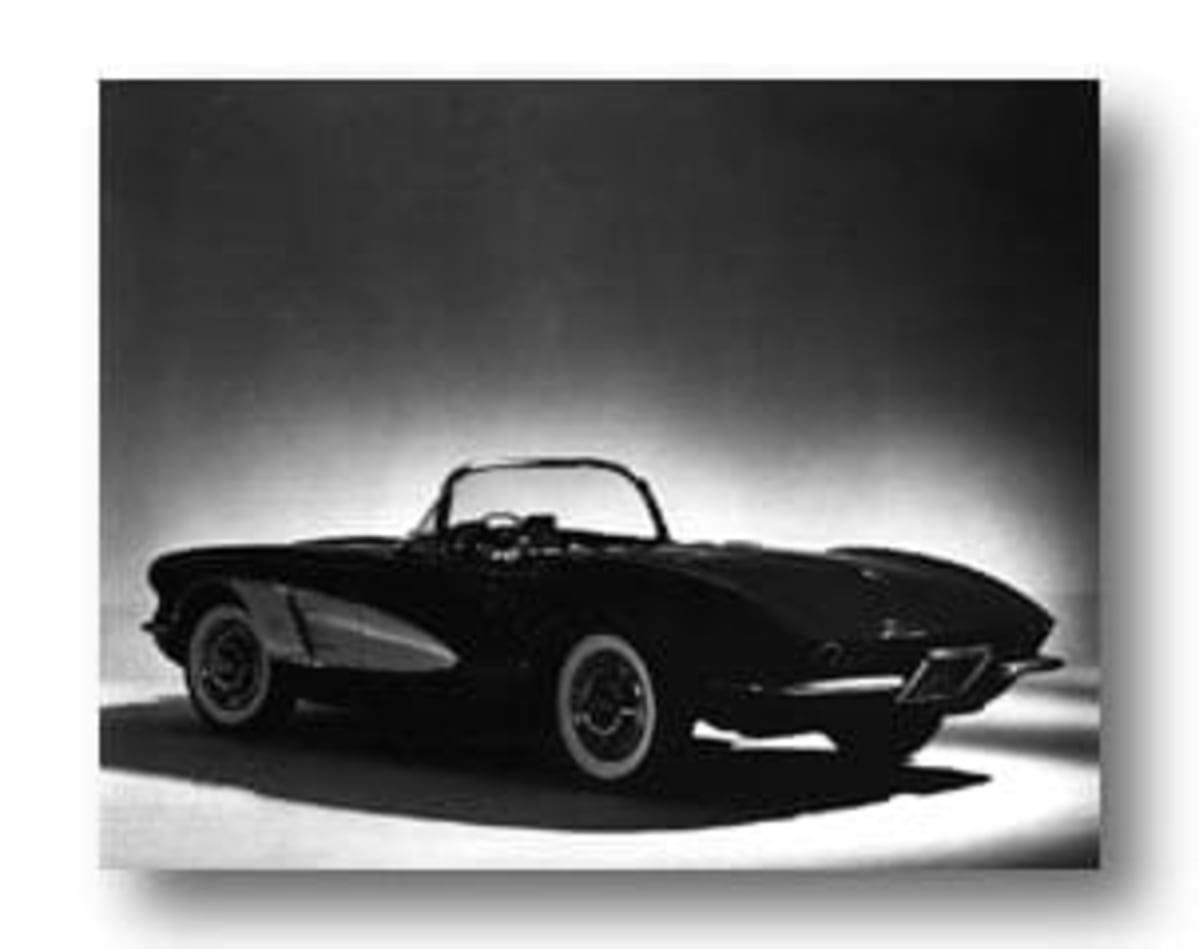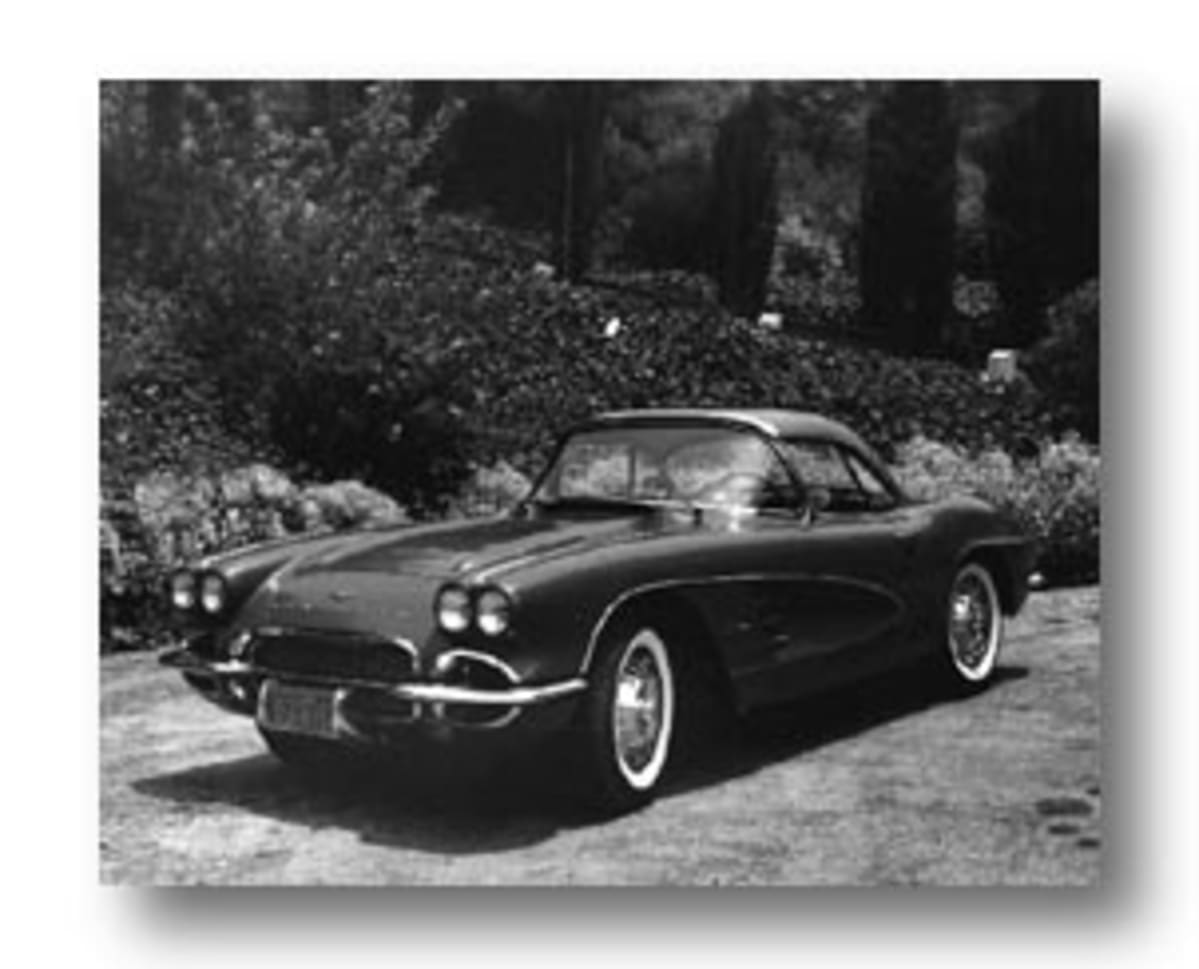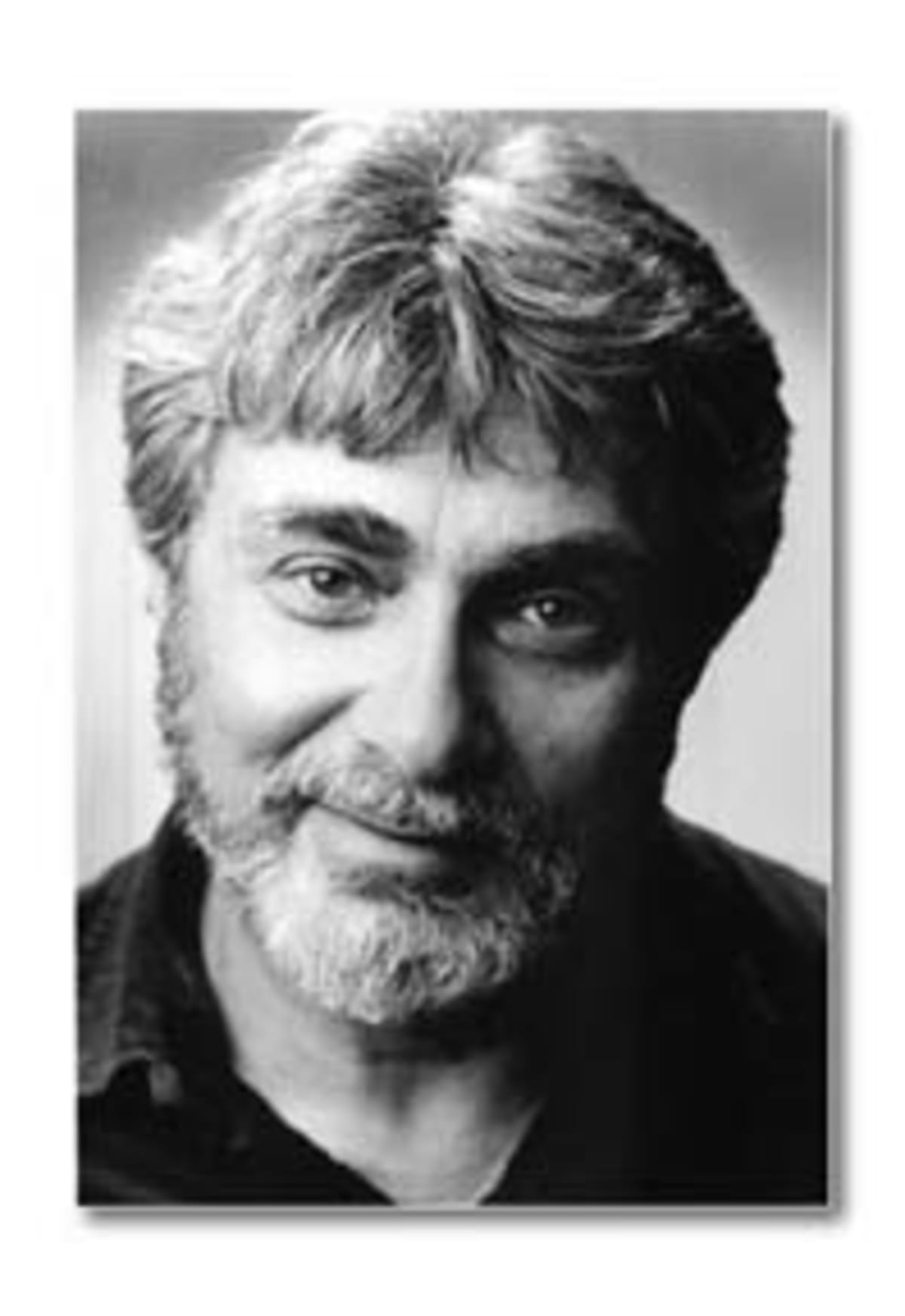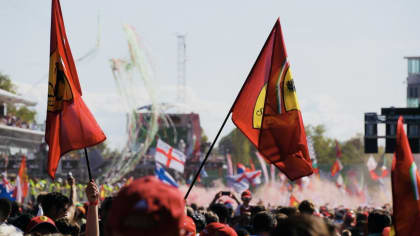CORVETTE: 1953-1962 - The Beginnings
Published on Thu, Jan 12, 1995
By: Len Frank
The late Len Frank on the first-generation Corvette, the C1 from 1953 through 1963.

In about twenty years, General Motors had gone from a ramshackle collection of failing auto makers and component companies to the largest manufacturer (of anything) in the world. The man who remolded GM was Alfred P. Sloan, Jr., an engineer who wore sober suits, somber ties and had a genius for organization and remaining private. He was, for over forty years, president or chairman of GM.

But the man who was king of it all was Harley Earl.
Harley Earl was a tall, nattily dressed young man when one of the Fisher brothers (founders of Fisher Body, GM’s body division) discovered him working at Don Lee’s California Cadillac distributorship, designing custom bodies for the cars bought by the Hollywood crowd. Fisher brought Earl back to Detroit and made him the head of GM’s Colour and Design studio. The first car he designed, the 1927 La Salle (a smaller, sporty Cadillac), was a huge success–Earl became a favorite of Sloan, and got pretty much anything he wanted—unusual inside a corporation founded on committees and consensus.
In the mid-1930s, Earl hired red-haired Bill Mitchell, an advertising artist who had been drawing sports cars (an unknown term at the time) for the wealthy Collier brothers, founders of the organization that became the Sports Car Club of America (SCCA).
By the late-1930s, America was building more cars by far than the rest of the world combined. GM was building half of the cars in America and Harley Earl was responsible for the way every one of them looked. Thanks to GM’s overwhelming success, Earl had become a legend—he really was automotive royalty.
Just before WWII, Earl’s styling, with Bill Mitchell directing the program, built an experimental roadster called “Y-Job.” It might not have been a sports car but it looked like one. Earl used it as his personal car for years. Earl obviously liked sporty roadsters.
Immediately after the war anything that even looked like a car would sell, but it wasn’t too long until the seller’s market turned to a buyer’s market, and the buyers wanted more than traditional Detroit was offering. Imports, especially sports cars, began trickling into America—at first, the British MC-TC. The TC was, by American standards, an unlikely car. It had less performance than a stodgy Detroit sedan, poor weather protection, not much reliability. But there was something about it…it was different, it was fun, it somehow looked right. It was the “looks” part that attracted Harley Earl & Co. General Motors turned to sports cars.
In 1951 GM started a series of car shows called Motoramas—a parade of designer’s fantasies with Harley Earl leading them. Motorama, over the years, was wild—turbine-powered cars fender-to-fender with alcohol-fueled supercharged V8s, magnesium body panels next to fiberglass, power tops that went up automatically when it started to rain and hubcaps that remained stationary while the wheels turned around them– fins, chrome, rocket shapes, jet scoops, Autoramic Eye self-dimming headlights, venti-ports, phallic hood ornaments., rolling sculpture. It was the world of the future coming soon to a showroom near everyone in America. Earl, now seconded by Bill Mitchell, was in his glory.
In 1948 the first fin-tailed Cadillacs appeared. In 1949 they got advanced engines. More people paid attention to the fins. In 1950, Briggs Cunningham, a yachtsman and sports car enthusiast (and close friend of the Collier brothers, former mentors of Bill Mitchell), took a pair of Cadillacs to Le Mans and ran them against the best in Europe. They did well—not great (10th and 11th), but well. Nash, one of the smaller American car companies had entered into a deal with Healey, a tiny British builder of sports cars, and a Nash Healey finished third. The race was publicized in the U.S. for the first time and readers of magazines like “Life” became aware of sports cars.
Earl and Mitchell saw the LeSabre as the star of the first Motorama—an All-American sports car.
It was a two seater with as much advanced engineering (all aluminum supercharged V8 that ran on high octane gasoline or methanol at wide open throttle, driving through an automatic transaxle, and much, much more) and as radical styling as possible (fins, jet-style intake and exhaust, retractable headlights, wraparound windshield, thirteen-inch wheels, and again, much, much more). The mouth breathers loved it.
But the Le Sabre was laughed at by the growing body of Europhiles—readers of the early car magazines (Road & Track and Motor Trend both started in the late-1940s and both gave Americans a window on Europe). They had seen the Jaguar XK-120, the early Ferraris, Aston-Martins, Maseratis. Sports cars didn’t have fins and jet scoops, they acted like racing cars even if you weren’t racing, they were the four wheeled example of “Less is More,” they were spartan, spare, exciting, wonderful. Harley Earl started paying attention.
In 1951 Briggs Cunningham went back to LeMans with a team of hemi-Chrysler-powered roadsters—proper sports cars—that were capable of running with the best in the world and suddenly sports car racing was rage in the US. The Cunninghams were the cars to beat—there was grumbling inside GM—the prototype Cunningham had been Cadillac powered.
U.S. Rubber Company was the manufacturer of the resins that were used to make fiberglass parts. Fiberglass was one of the miracle materials that came out of WWII—it had been used for radar domes and small boat hulls among other things. When the war was over, boat builders continued to use it. One of the builders, Glasspar, in Santa Barbara north of Los Angeles, built a fiberglass-bodied car, U.S. Rubber bought it, named it Alembic I, and began to use it in trade shows to sell the possibilities of fiberglass (and their resins).
Harley Earl arranged for the Alembic I to be shown to a group of GM officials—it was carried by elevator to the styling auditorium of the GM research building. Earl had been toying with a low-cost sports car since 1951, since the Le Sabre was laughed at in the press and at its appearance at the Watkins Glen sports car races. The car Earl wanted was along the very traditional lines of the MG-TC. Nothing had come from his efforts. The Alembic I changed all of that. Earl had a small crew working on his ideas. After seeing the Alembic I, Bob McLean was added to the team. If the first Corvette can be said to have a single designer, it was McLean..
Fiberglass cost too much for mass production but for building prototypes it was perfect. With very little instruction, Chevy engineers built a 1952 Chevy convertible with a fiberglass body, then accidentally rolled it over. They were impressed by how easy it had been to build–and to fix.
It took a few people working inside General Motors just over a year to produce the first Corvette—a car with a new concept (to them), using techniques and materials they hadn’t known much about before the project started.
The conventional way to start designing a new car was from the cowl section adding the “hard points”—the hip-hinge of the driver (called “H-point”), the relationship of H-point to the bend of the driver’s ankle, the relationship of both of those to the cowl which forms the support for the steering column and pedals. McLean chose to start with the rear axle, a move that was treated as heresy by the others on the team. When he needed guidance, he turned to the Jaguar XK120. Thoughts of an exposed rear spare tire and a narrower track were successfully overcome.
After the rear axle was located, the seats were placed as close to it as possible. The engine was moved as far down and as far back as possible (three inches down and seven inches back compared with the sedan), another heresy. Full use was made of normal Chevrolet production parts–most of the front suspension, redesigned for 1949, the reliable old “Stovebolt Six” that Chevy had been using since 1937—actually, the Powerglide version with 235.5 cubic inches (standard gearbox used 216.5 cu.in ) and hydraulic lifters was used as the basis.
In an incredibly short period during April, 1952, a full-sized plaster/wood mockup of the Corvette was built and trimmed for viewing by G.M. executives Harlow Curtice, President of G.M., Tom Keating, General Manager of Chevrolet, and Ed Cole, Chevy’ s new Chief Engineer. Cole had had his own private viewing and was said to have “jumped up and down” with excitement–Earl knew that it would take an extraordinary degree of cooperation from Cole if the Corvette was going to be made a real car. Cole, who later went on to become President of G.M.—probably the last real car enthusiast to occupy that position—was ultimately going to be responsible for the design/adaptation of a chassis and the modification of an engine to power it.

McLean had been joined at the drawing board by Clare MacKichan, another Chevy stylist. MacKichan’s role was to help McLean refine his lines—there is a good possibility that the G.M.-style decoration—the taillight bullets and fins, the chrome side trim, the hub caps with knockoff spinners , the flashy grill trim and the bumpers came from his pencil. It was very much in the G.M. idiom. Interior was done by Joe Schemansky—also very much from the G.M. school of design. The wraparound windscreen, first seen on other Motorama cars, was another given. Remember that the proposal was really to build a show car, although Harley Earl, with all his influence (and budget) had production in mind from the beginning.
Earl’s theatrical presentation had the “car “in the viewing auditorium behind curtains. When the curtains parted there was a quick look at the mockup with Carl Peebles, the draftsman , wearing a crash helmet and goggles, behind the wheel. Then the curtains closed, the light went down, the curtains parted to reveal the empty car, ready for close inspection by the execs. Who could resist? They approved it for Motorama prototyping with an eye toward production.
Maurice Olley, an Englishman who had originally worked for Rolls-Royce, had been lured to Detroit where he did pioneering work on suspension and chassis design. On June 2, 1952, Olley and his R&D group and Chevy engineers were shown the plaster mockup and told that they had seven months before showing and twelve months to production. “There was not much time,” said Olley who had a gift for understatement as well as experimental engineering.
Harley Earl’s original idea, dating back a year or more before the plaster mockup was for a car that would be simple and inexpensive enough to allow it to be sold for the price of a normal Chevy sedan or even less. Earl had intuitively identified the youth market that Ford was to exploit a decade later with the Mustang. The Corvette, though, with its modified engine and unique frame, had gone far beyond the original low-priced car concept.
Olley’s chassis (Cole was really in charge) was on paper in only ten days. The frame itself was completely new. Wheelbase had been fixed at 102 inches (very close to the XK120), track at 57 inches front, 59 inches rear—wider than the Jag. The frame itself used boxed side members for rigidity , an “X” member tying the main rails together with the driveshaft running above, rather than through, the X. Chevy passenger cars used a torque tube drive shaft. For the Corvette, the transmission and rear axle were converted to delete the tube, leaving a Hotchkiss-style driveline with the rear semi-elliptic leaf springs locating as well as springing the axle. The frame, which was used with only slight modification for ten years, weighed only 213 pounds.
Front suspension was a modification of the passenger car’s—rear swept unequal length, parallel A-arms, but with steering linkage modifications and a new 16:1 Saginaw (GM’s steering gear division) quick steering box. Springing was by coils with the tube shocks running through them. Olley had designed in a high degree of understeer by locating the rear end of the rear springs higher than the fronts. Not everyone agreed with the understeer.
Brakes were the Chevy 11-inch iron drums with single leading shoes. To modify them for the Corvette, brake bias was shifted rearward ( the Corvette’s weight distribution was 53/47—standard sedan was 56/44), and master cylinder bore was increased for faster reaction time. With so little time available, it was necessary to use as many production parts as possible. Cole, Olley and company, were mocking up parts for suitability and fit right from preliminary drawings, reworking them when they proved unsuitable.
By today’s standards, the Chevy six, nicknamed “The Cast-Iron Wonder,” was not a very ambitious engine. Chevrolet had revolutionized the low-priced market in the U.S. by introducing a six in 1929—Ford and Plymouth both had fours. Chevy had used overhead valves since their pre-WWI beginnings– the six got them as well. That original six had three main bearings, 194 cubic inches, cast iron pistons , and lubrication to the connecting rod bearings by splash. Over the next few years it was improved with better lubrication, better cooling, and a more efficient combustion chambers leading to higher horsepower—all necessary to keep competitive with Ford’s V8 (introduced in 1932), and Plymouth’s six (introduced in 1933). For 1937, Chevy introduced a new six that incorporated all of the lessons of the old engine with an extra main bearing (now four) and more displacement (216.5 cu.in.). Horsepower, depending on year and version, was somewhere around 80.
This Chevy six isn’t too impressive, even for 1937, but it speaks more about the state of U.S. car than it does about lack of engineering in Detroit. The standard in the U.S. was for big, slow turning engines that required little maintenance and made great amounts of torque at very low speeds.
In fairness, the “Blue Flame” used in the Corvette was considerably changed from its 1937 beginnings. It was based on the truck version, first seen in 1941, with 235.5 cu.in.. When the Powerglide automatic had been introduced as an option on the Chevy sedans, the truck engine was converted to hydraulic valve lifters and used as the standard powerplant with the automatic to help offset the power loss in the two-speed-plus-torque converter trans. As used in the sedan, the Powerglide engine made 115 horsepower at 3600 rpm.
For the Corvette, the engine was reconverted to mechanical lifters, the infamous fiber silent timing gear (always the first thing to fail on the Chevy engine) was replaced with a steel gear. The timing gear drove a new high lift camshaft and dual valve springs—it was the most radical cam then used in an American engine. Valves themselves had a modified shape were and better alloy steel. Compression was raised from 7.5 to 8,0:1—and the Cast Iron Wonder was all cast iron no longer—it got aluminum pistons for the first time.
The standard Chevy Rochester downdraft carburetor would have stuck through McLean’s low, flat hood so a new manifold was constructed to use three Carter Y-series sidedraft carburetors—similar to those used on the Nash-Healey. A new split exhaust manifold was fabricated with separate dual exhaust pipes and mufflers running all of the way to the rear—very uncommon in that conservative era. The result was an engine that would wind to 5500 rpm—an unheard of rate from a Detroit product then—though peak power was 150 at a more reasonable 4200 rpm.
Dynaflow was the second successful automatic (after Hydramatic) Used on 1947 and later Buicks, it used a torque converter driving a two speed epicyclic gearset. A torque converter uses a stator, a kind of sophisticated stationary paddle wheel placed between the driving paddle wheel and driven paddle wheel. The effect was to multiply torque as long as there was a speed differential between driving and driven wheels—torque multiplication was in the range of 2/2.5:1 at its maximum (called stall speed). The closer the speeds of the driving and driven wheels, the lower the multiplication. The speeds were never equal so there was always some slight multiplication, some loss of speed, and some resultant loss of power. Because there was a delay in acceleration while the driven wheel spooled up, enthusiasts tended to look down on the Dynaflows calling them “slushboxes” and worse—much worse.
The Powerglide, used by Chevrolet since 1950, was very much like a smaller Dynaflow. Enthusiasts seldom bought Chevrolets so any loss of performance was overlooked and any increase in convenience was multiplied. Powerglide was an instant success. It did not enhance performance, it hurt gas mileage, but Chevy buyers loved it. The real reason for use of the Powerglide probably was the incredibly short period open for development of the first Motorama Corvette.
The Powerglide was modified by raising its full throttle shift points and adapting it to the open driveshaft used on the Corvette. Internal hydraulic pressure was raised to help the transmission deal with expected full throttle performance and the extra torque of the three-carb engine. The rear axle was standard Chevrolet, again adapted for the open driveshaft, and fitted with a 3.55:1 ratio. That would give it, with the stock 6.70X15 standard tires, 108 mph top speed at 4800 rpm. That was about 15 mph slower than an XK 120 but about 15 mph faster than a stock Chevy or Ford. An Olds, Cadillac, or the new “hemi” Chrysler might have been a little faster.
The use of glass-reinforced plastic (GRP) for the first body was simply another expedient, forced, in part, by a shortage of time. The original plan was to build just the Motorama car of GRP while fabricating Kirksite (an easily shaped lead-based material used for short production runs ) dies for steel bodies for the expected 10,000 1954 Corvettes. The Motorama Corvette (often called the Waldorf Corvette, from the site of its initial show) had a body about twice as thick (about 0.2 inches) as later production bodies . The car was described at the Waldorf Motorama (January 1953) as being six months to a year away from production. It differed from the actual production car in minor trim details: the name script, front and rear, the side spear, the front and rear medallions, the deletion of two small scoops from the cowl sides, the deletion of exterior door locks (the production cars had side curtains and inside latches like most of the British roadsters), minor changes to the hub caps, which, unfortunately, featured fake knockoff spinners.

There were a few things that were changed at the very last minute—plexiglass headlight covers originally planned were dropped because of production difficulties and the chrome mesh covers (reminiscent of Bentley radiator screens and Monte Carlo Rallye light guards were substituted. The name could well have been Corvair (a later Corvette-based Motorama fastback coupe became the first car to carry that name, six years before the air-cooled Chevy compact) before the Waldorf car was called “Corvette”, which GM went on to explain was a “trim, fleet, naval vessel….”
People who saw the Corvette wanted it and wanted it now. The management decided that 300 1953 cars would be produced with GRP bodies—the on-sale date was June—five months to ready the car for production. Making normal steel body dies was a lengthy process, especially in those pre-computer-controlled machine tool days. Kirksite would have shortened the process by half—perhaps ten months or a year. Remember that the car had not had its steel body engineering completed—that would have to be done before work could start on the dies.
In addition to the GRP hand lay-up process described earlier, there were two other methods then in use—the “bag” method and matched mold process. The bag method used a large flexible airtight bag wrapped around a mold similar to a hand lay-up fixture. The resin impregnated glass was laid into the mold, the bag sealed and the air pumped out. The resulting vacuum pulled the wet glass into the mold.
The matched mold system used male and female mold halves, with shards of glass strands and resin sprayed into the mold from a “chopper” gun. The molds were then pressed together under considerable pressure and heat and in the shortest time of the three methods, a finished piece could be pulled from the mold. Other advantages were excellent surface quality on both sides of the part, a much faster cure time (due to heat applied to the mold), far lower labor costs and material costs, thus lower parts costs, and greater consistency in part thickness. The downside was a weaker part (because of the short chopped strands) and far higher tooling costs.
GM chose matched molds. Now all they needed was someone to do it for them.
Top image: A 1960 C1 Corvette (public domain image, courtesy of WallpaperUp)

The late Len Frank was the legendary co-host of “The Car Show”—the first and longest-running automotive broadcast program on the airwaves. Len was also a highly regarded journalist, having served in editorial roles with Motor Trend, Sports Car Graphic, Popular Mechanics, and a number of other publications. LA Car is proud to once again host “Look Down the Road – The Writings of Len Frank” within its pages. Special thanks to another long-time automotive journalist, Matt Stone, who has been serving as the curator of Len Frank’s archives since his passing in 1996 at the age of 60. During the next few months, we will be re-posting the entire collection of “Look Down the Road”, and you’ll be able to view them all in one location under the simple search term “Len Frank”. – Roy Nakano




